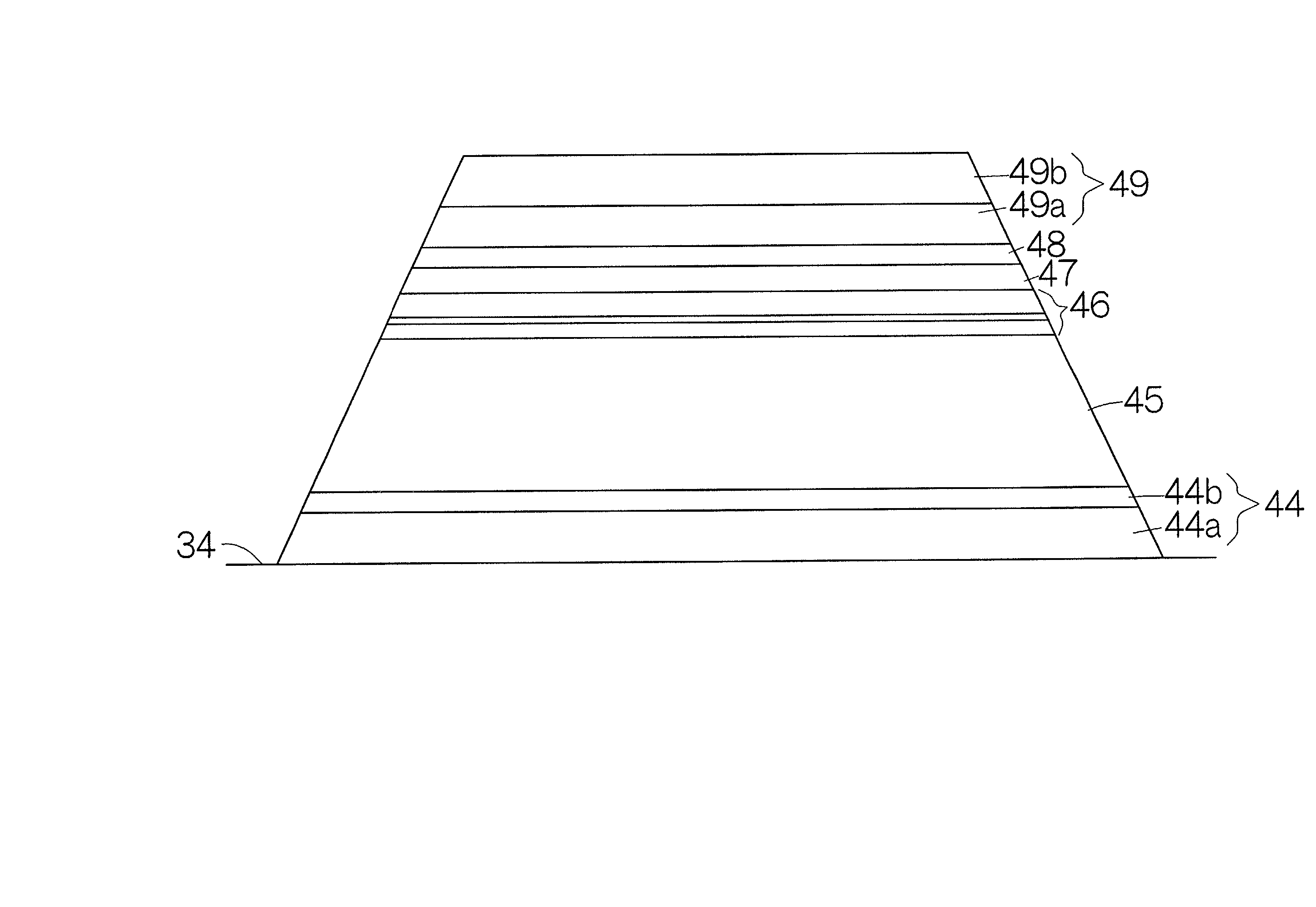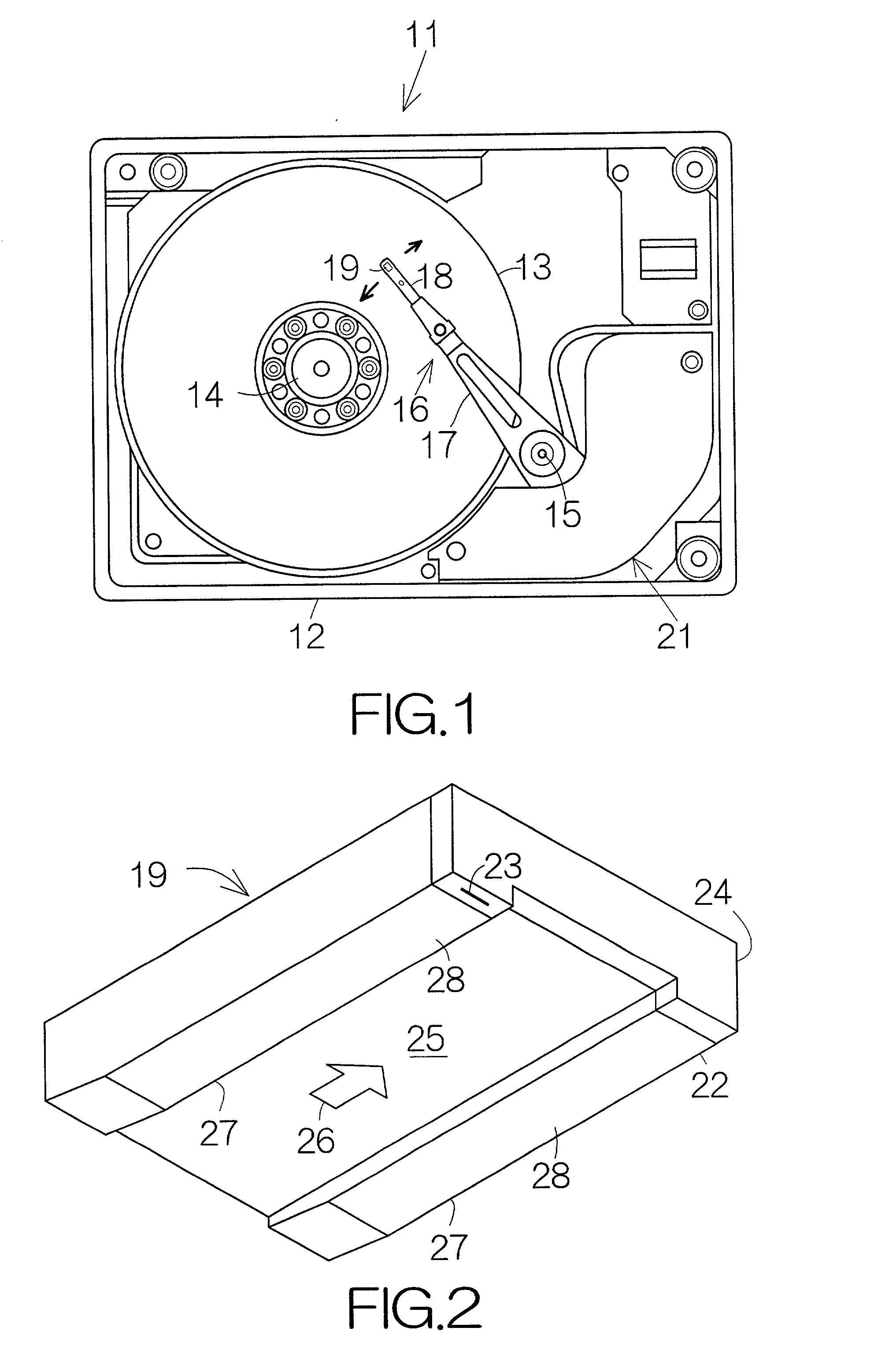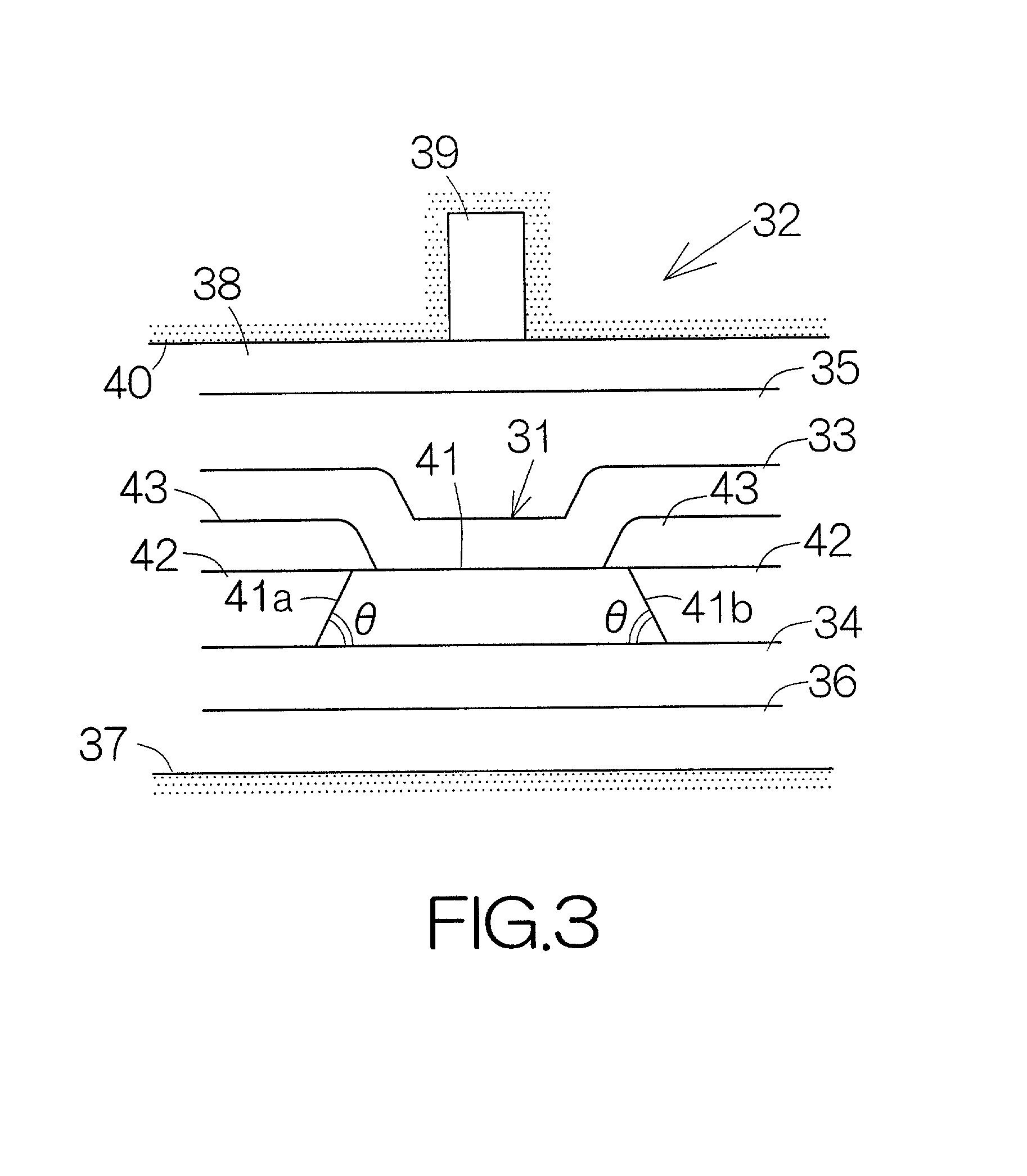Magnetoresistive film having non-magnetic spacer layer of reduced thickness
a non-magnetic spacer layer and magnetoresistive film technology, applied in the field of magnetoresistive elements, can solve the problems of increased shunt current in the magnetoresistive film, inability to contribute to the detection of variation in the electric resistance and the exposed surface of the magnetoresistive film suffers from so-called interfacial roughness
- Summary
- Abstract
- Description
- Claims
- Application Information
AI Technical Summary
Problems solved by technology
Method used
Image
Examples
Embodiment Construction
.7 99.5 0.4 Comparative Example 4 87.5 6.5
[0060] As is apparent from Table 2, it has been confirmed that the specific example of the spin valve film 41 achieves a remarkably smaller exchange coupling Hin between the pinned ferromagnetic layer 46 and the free ferromagnetic layer 48, as compared with the comparative example, while it exhibits the exchange coupling Hua, similar to that of the comparative example, between the first and second pinned ferromagnetic layers 46a, 46c. This results in a larger magnetoresistive ratio in the specific example.
[0061] Furthermore, the inventors prepared another specific examples of the aforementioned spin valve film 41. These specific examples were designed to include a Ta layer of 5. Onm thickness, an NiFe layer of 2. Onm thickness, a PdPtMn layer of 15. Onm thickness, a CoFeB layer of 1.0 nm thickness, an Ru layer of 0.7 nm thickness, a CoFeB layer of 1.5 nm thickness, a Cu layer as the non-magnetic spacer layer 47, a CoFeB layer of 2.0 nm thick...
PUM
 Login to view more
Login to view more Abstract
Description
Claims
Application Information
 Login to view more
Login to view more - R&D Engineer
- R&D Manager
- IP Professional
- Industry Leading Data Capabilities
- Powerful AI technology
- Patent DNA Extraction
Browse by: Latest US Patents, China's latest patents, Technical Efficacy Thesaurus, Application Domain, Technology Topic.
© 2024 PatSnap. All rights reserved.Legal|Privacy policy|Modern Slavery Act Transparency Statement|Sitemap



